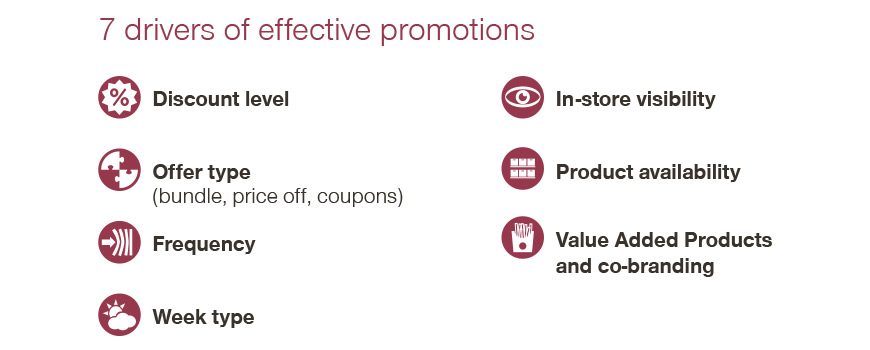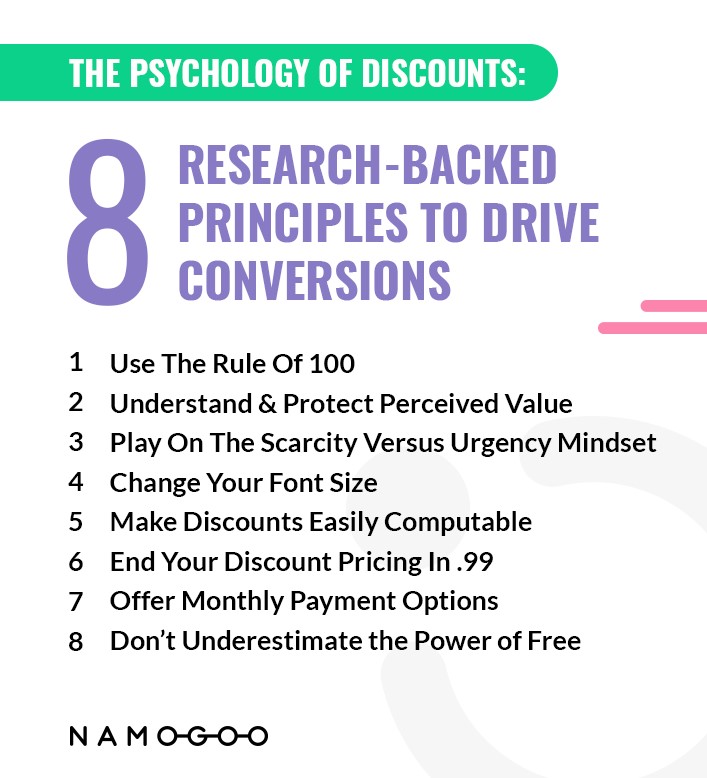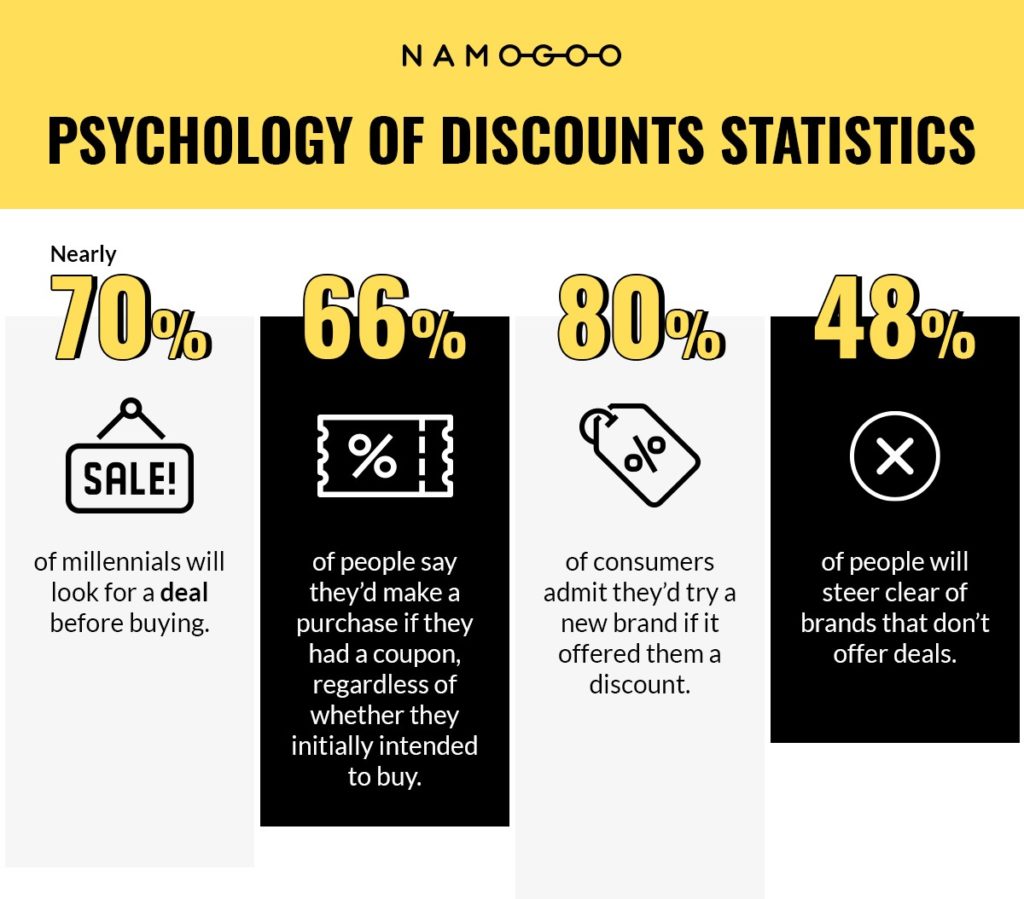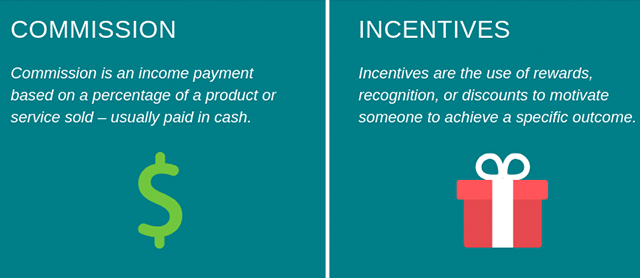You may have asked yourself, “Are discounts really effective in driving sales?” Well, this article aims to shed some light on this question. Throughout the next few paragraphs, we’ll explore the impact of discounts on consumer behavior and the effectiveness of this strategy as a sales incentive. In today’s competitive market, businesses are always looking for effective tactics to boost their sales, and discounts seem to be a popular choice. Whether you’re a consumer wondering if you’re truly getting a good deal or a business owner curious about the effectiveness of discounts, this article will provide you with valuable insights. So, let’s dive in and uncover the truth about discounts as a motivator for sales!

This image is property of www.simon-kucher.com.
Purpose of Discounts
Attracting new customers
Discounts can be a powerful tool for attracting new customers to your business. By offering a discounted price, you create a sense of value and affordability that can be appealing to potential customers. This can especially be effective for businesses that are just starting out or looking to expand their customer base.
Encouraging repeat purchases
Discounts can also play a crucial role in encouraging repeat purchases from your existing customer base. By offering exclusive discounts or rewards to loyal customers, you can create a sense of appreciation and incentivize them to return to your business. This not only helps to build customer loyalty but also increases the likelihood of generating higher sales in the long run.
Clearing excess inventory
One of the practical purposes of discounts is to clear excess inventory. When businesses have products or services that are not selling as well as expected or are nearing the end of their shelf life, offering discounts can be an effective way to quickly sell off those items. By reducing the price, you create a sense of urgency for customers to make a purchase, helping to alleviate the burden of excess inventory.
Psychological Impact of Discounts
Perceived value
Discounts can have a significant psychological impact on customers by influencing their perception of value. When customers see a discount, they perceive that they are getting a better deal and are more likely to make a purchase. This perception of value can be a strong motivator for customers and can help drive sales for your business.
Sense of urgency
Discounts can create a sense of urgency and FOMO (fear of missing out) in customers. When presented with a limited-time or limited-quantity discount, customers feel a need to act quickly before the opportunity expires. This urgency can lead to increased sales as customers are more likely to make a purchase to take advantage of the discounted price before it’s too late.
Reward and satisfaction
Discounts also serve as a form of reward for customers, making them feel appreciated and satisfied with their purchase. By offering discounts, you can enhance the overall customer experience and build a positive perception of your brand. This can result in increased customer satisfaction and loyalty, leading to repeat purchases and positive word-of-mouth recommendations.
Impact on Pricing Strategy
Maintaining profit margins
While discounts can be effective in driving sales, it is essential to consider their impact on profit margins. Offering discounts may lead to lower profits per sale, especially if the discount is significant. It is crucial to carefully analyze the cost implications and ensure that your pricing strategy allows for maintaining healthy profit margins, even with discounts.
Maintaining brand image
Discounts should align with your brand image and positioning. If your brand is known for high-quality, luxury products or services, heavily discounting may undermine the perceived value and damage your brand image. It is essential to strike a balance between offering attractive discounts and maintaining the integrity and perception of your brand.
Price perception
Discounts can influence customers’ perception of pricing. If customers become accustomed to frequent discounts, they may not be willing to pay the full price for your products or services in the future. It is crucial to carefully consider the long-term impact on price perception and ensure that discounts are used strategically to create value rather than devalue your offerings.
Discount Strategies and their Effectiveness
Percentage-based discounts
Percentage-based discounts offer a straightforward and easily understandable savings for customers. For example, offering a 20% discount off the original price can attract attention and entice customers to make a purchase. This type of discount can be particularly effective during sales events or promotions.
Dollar-amount discounts
Dollar-amount discounts provide customers with a fixed monetary value off the original price. For example, offering $10 off a purchase of $50 or more can be an effective way to incentivize customers to spend a certain amount. This type of discount can also help with upselling and encouraging customers to add more items to their cart to reach the discount threshold.
BOGO offers
BOGO, which stands for “buy one, get one,” offers customers an additional item for free or at a discounted price when they purchase a certain item. This type of offer can be effective in driving sales, as customers feel like they are getting more value for their money. BOGO offers can be particularly successful in industries where customers often need multiple items or in situations where you want to clear out specific inventory.
Limited-time offers
Limited-time offers create a sense of urgency and FOMO, motivating customers to make a purchase before the discount expires. By putting a time constraint on the availability of the discount, you create a scarcity mindset that drives customers to take immediate action. This type of offer can be highly effective in generating immediate sales and encouraging impulse purchases.
Loyalty programs
Loyalty programs offer exclusive discounts and rewards to customers who consistently make purchases or engage with your business. By incentivizing repeat purchases, loyalty programs can help foster customer loyalty and encourage customers to choose your business over competitors. This type of discount strategy recognizes and rewards customers for their ongoing support and can result in long-term customer retention.
Potential Negative Effects of Discounts
Devaluation of product or service
Frequent or excessive discounts can potentially devalue your products or services in the eyes of customers. If customers perceive your offerings as always being on sale, they may question the true value or quality of what you have to offer. It is crucial to strike a balance between offering discounts and maintaining the integrity and perceived value of your products or services.
Loss of profitability
Discounts, particularly significant ones, can impact your profitability per sale. If the cost of producing or providing your products or services is not taken into account when determining the discounted price, you may face financial challenges. It is essential to carefully analyze the cost implications and ensure that discounts are structured in a way that does not compromise overall profitability.
Cannibalization of higher-priced products
Discounting can sometimes lead to a shift in customer behavior, with customers opting for discounted products or services instead of higher-priced alternatives. While this can drive sales for the discounted items, it may result in reduced sales for higher-priced offerings. It is crucial to monitor and evaluate the impact of discounts on the sales of different products or services to avoid cannibalization.
Customer price sensitivity
Frequent discounts and promotions can also make customers more price-sensitive. If customers perceive that discounts are always available or that prices are frequently changing, they may delay making a purchase in anticipation of a better deal. This can lead to reduced sales or prolonged decision-making processes, impacting your overall revenue.
Alternatives to Discounts
Bundling products or services
Instead of offering discounts, consider bundling complementary products or services together at a slightly higher price point. By offering a bundled package, customers can perceive added value and may be more likely to make a purchase. This strategy can also help you increase the average transaction value while avoiding the potential negative effects of discounts.
Gift with purchase
Offering a free gift or bonus item with a purchase can be a compelling alternative to discounts. Customers feel like they are receiving something extra, and this can be a strong motivator to make a purchase. It is essential to choose gifts or bonus items that are relevant to your customers and align with your brand to ensure maximum impact.
Referral programs
Referral programs can be a powerful way to increase sales without relying on discounts. By incentivizing your existing customers to refer new customers to your business, you can tap into their networks and expand your customer base. Offer rewards or discounts to both the referring customer and the new customer to encourage participation.
Enhanced customer service
Exceptional customer service can be a valuable alternative to discounts. By providing personalized experiences and going above and beyond to meet your customers’ needs, you create a positive and memorable impression. This can result in increased customer satisfaction, loyalty, and word-of-mouth recommendations, ultimately driving sales without relying on discounts.
Product customization
Offering customization options can add value to your products or services without having to resort to discounts. By allowing customers to tailor their purchases to their preferences or unique needs, you create a sense of exclusivity and personalization. This can be particularly effective for businesses in industries where customization is highly valued, such as fashion or home decor.

This image is property of www.namogoo.com.
Effective Discount Implementation
Segmentation and targeting
To maximize the effectiveness of discounts, it is crucial to segment and target your customer base strategically. Different customer segments may respond differently to various discount strategies, and tailoring your offers to their specific needs and preferences can result in higher conversion rates. Conduct market research and analyze customer data to identify the most effective discount strategies for each segment.
Strategic timing
Timing plays a vital role in the success of discount implementation. Identify key seasons, events, or periods when customers are most likely to be motivated to make a purchase and leverage those opportunities. For example, offering discounts during holiday seasons or specific industry-related events can help increase sales. It is essential to plan ahead and align your discount offerings with relevant timing.
Communication and promotion
Effectively communicating the details of your discounts is crucial for driving sales. Utilize various marketing channels such as email, social media, and your website to promote your discount offers. Clearly convey the value and urgency of the discounts to capture customers’ attention and encourage them to take action. Engage with customers and address any questions or concerns they may have to build trust and confidence in the discount.
Tracking and evaluation
To measure the effectiveness of your discounts, it is important to track and evaluate key metrics. Monitor sales revenue, customer reaction and feedback, repeat purchase rates, and market share growth to assess the impact of your discount strategies. Analyze the data regularly and make necessary adjustments to optimize the effectiveness of your discount implementation.
Measurement of Discount Effectiveness
Impact on sales revenue
The most direct measure of discount effectiveness is its impact on sales revenue. By comparing revenue generated before and during discount periods, you can gauge the success of your discount strategies. Analyze the increase in sales volume, overall revenue growth, and the return on investment to assess the effectiveness of your discounts in driving sales.
Customer reaction and feedback
Monitoring customer reactions and feedback is essential for evaluating the effectiveness of discounts. Pay attention to customer reviews, comments, and social media discussions related to your discount offerings. Positive customer feedback, increased engagement, and a boost in brand loyalty indicate that your discounts are resonating with your target audience.
Repeat purchase rate
Evaluate the impact of discounts on customer loyalty and repeat purchases. Measure the percentage of customers who make repeat purchases after availing a discount and compare it to the repeat purchase rate without the discount. A higher repeat purchase rate indicates that your discounts are helping to retain customers and encouraging them to continue supporting your business.
Market share growth
Analyzing the market share growth during and after implementing discounts provides insights into its effectiveness. Compare your market share against competitors and evaluate any shifts or increases in your market position. Positive market share growth suggests that your discounts are attracting new customers and helping to capture a larger portion of the market.

This image is property of www.namogoo.com.
Considerations for Different Industries
Retail industry
In the retail industry, discounts are widely used to drive sales. When implementing discounts in the retail sector, it is essential to strike a balance between attracting customers while maintaining profitability. Careful consideration should be given to the timing and duration of discounts, as well as the impact on customer perception of value.
Hospitality industry
The hospitality industry can effectively utilize discounts to fill vacancies or boost occupancy rates during slow periods. Offering discounts on room rates, dining options, or additional amenities can entice travelers to choose your establishment over competitors. However, it is crucial to be selective in discount offerings to avoid diluting the perceived quality of your services.
Subscription-based services
Discounts can be a valuable tool for attracting new subscribers in the subscription-based services industry. Offering a discounted rate for the first few months or providing exclusive perks to new subscribers can help entice potential customers to sign up. However, it is essential to carefully analyze the long-term profitability of discounted subscriptions.
Luxury goods industry
Discounts in the luxury goods industry should be approached with caution to avoid tarnishing the exclusivity and perceived value of the brand. Instead of offering direct discounts, luxury brands can consider alternative strategies such as limited-edition items or exclusive events for loyal customers. These strategies maintain the brand’s premium image while still providing incentives for customer engagement.
Conclusion
Discounts can be an effective incentive for driving sales, attracting new customers, and encouraging repeat purchases. The psychological impact of discounts, such as perceived value, a sense of urgency, and rewarding customer satisfaction, contributes to their effectiveness. However, businesses must carefully consider the impact of discounts on pricing strategy, maintaining profitability, and brand image. By implementing discount strategies strategically, considering alternatives, and evaluating their effectiveness, businesses can harness the power of discounts to boost sales and drive long-term growth.

This image is property of assets-global.website-files.com.


